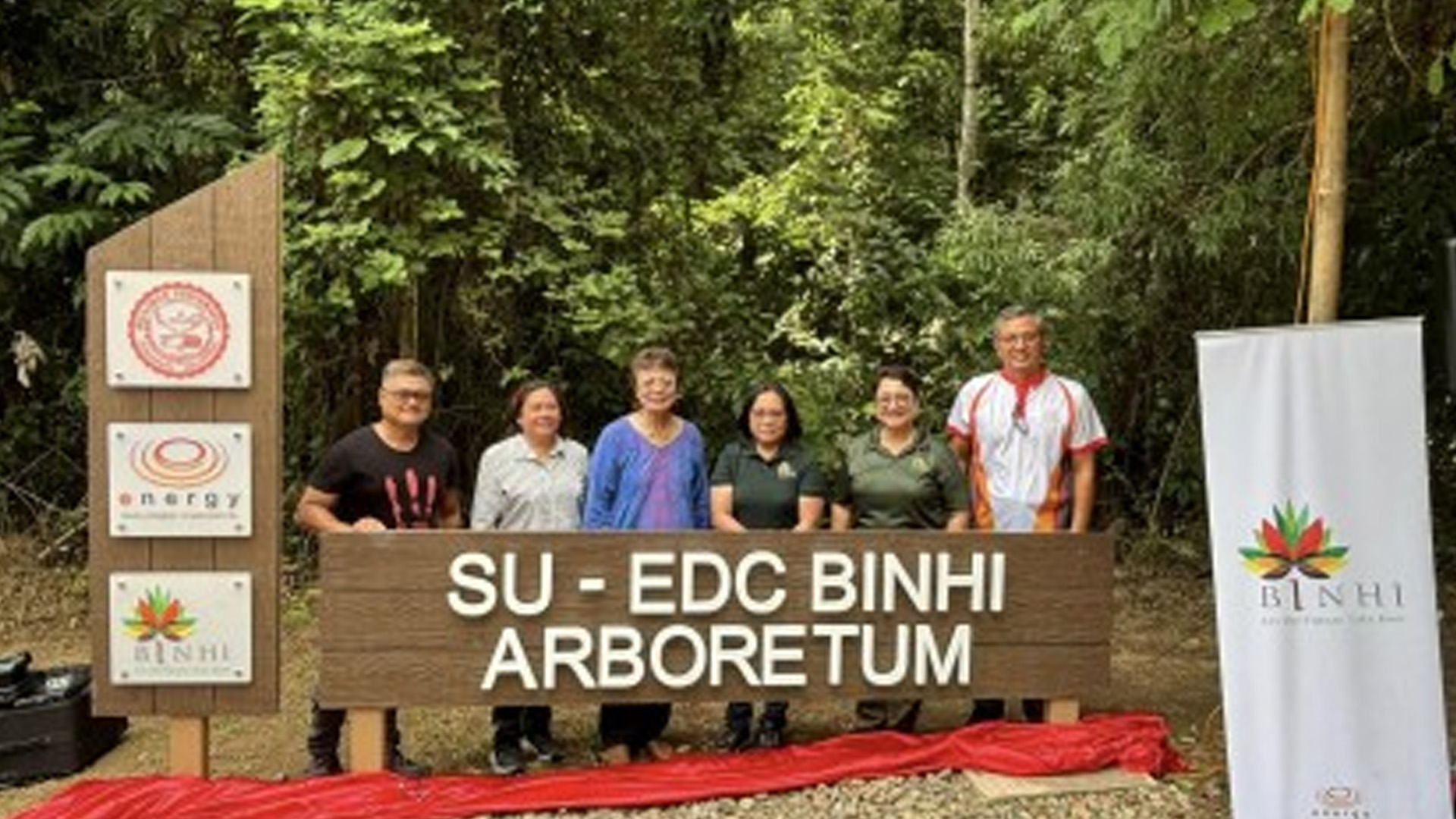A 19-hectare arboretum in Valencia town, Negros Oriental province is seen as a sustainable biodiversity conservation site of at least 60 species of threatened and endangered native Philippine trees in the Visayas.
On Wednesday, Silliman University (SU) and First Gen-owned Energy Development Corporation (EDC) launched the SU-EDC BINHI arboretum at the Center for Tropical Conservation Studies (CENTROP) after almost four years since an agreement was signed between the parties in October 2020.
Dr. Betty McCann, SU president, said during the unveiling program that the BINHI arboretum project is part of the university’s biodiversity conservation efforts.
“We would like to plant more of them (native trees) and there is a need for an arboretum that has a nursery so that once we plant the first set of trees, we will have some replacement,” she said.
SU has provided the space for these trees at the CENTROP site, while EDC, through its banner environment program, BINHI, would provide native tree seedlings and technical assistance for their maintenance.
Leandro Cabrera, SU-CENTROP Coordinator, said their main objective is to provide education for conservation and are solidifying their efforts with partners like EDC.
“With all the changes in the environment, our biodiversity is also affected,” Cabrera said, citing the need to educate the younger generation on the importance of conservation.
The SU officials underscored the importance of sustainable biodiversity conservation and agreed that the arboretum with its native trees would help reduce the carbon footprint.
Forests will absorb carbon dioxide and provide food and water to many.
Ariel de la Cruz, EDC-Negros Watershed Management Officer, said Phase 1 comprises 0.75 hectares planted with endangered native tree species.
Already, 25 species of trees endemic to Negros and Visayas have been planted a few years back and the collaboration will target to plant 60 native species in the coming years, de la Cruz said.
He said 130 seedlings were planted on Wednesday, adding the first 100 seedlings were already planted on March 2022, and another 100 on June 2022.
The most endangered native Visayan species planted were Almaciga and Red Lauan (Shorea negrosensis), EDC’s “flagship flora species”.
De la Cruz said they have a survival rate between 90 and 95 percent.
Ma. Nancy Ibuna, the head of EDC Corporate Relations and Corporate Communications Division, said Silliman University is among the 218 partners of EDC in the country in its greening advocacy of planting endangered native trees.
EDC has established 41 other arboretums across the country, including the one in Valencia town.
The CENTROP in Palinpinon town also hosts endangered animal species such as the Philippine spotted deer, the Negros warty pig, and the Bleeding Heart pigeon.
McCann said some bats have also made their home at CENTROP’s existing forests and some monkeys have also been reported there.
For EDC, close collaboration with local communities is crucial, especially in ensuring proper site-species matching and high survival rate.
“This partnership benefits both, where the communities are engaged in economically-beneficial initiatives and the arboretum contributes to EDC’s mission of forging collaborative pathways for a decarbonized and regenerative future,” EDC said in a statement.
Since its inception in 2008, BINHI has partnered with 88 forest communities to plant a total of 10,260 hectares throughout the country where indigenous forest tree species are prioritized. (PNA)








